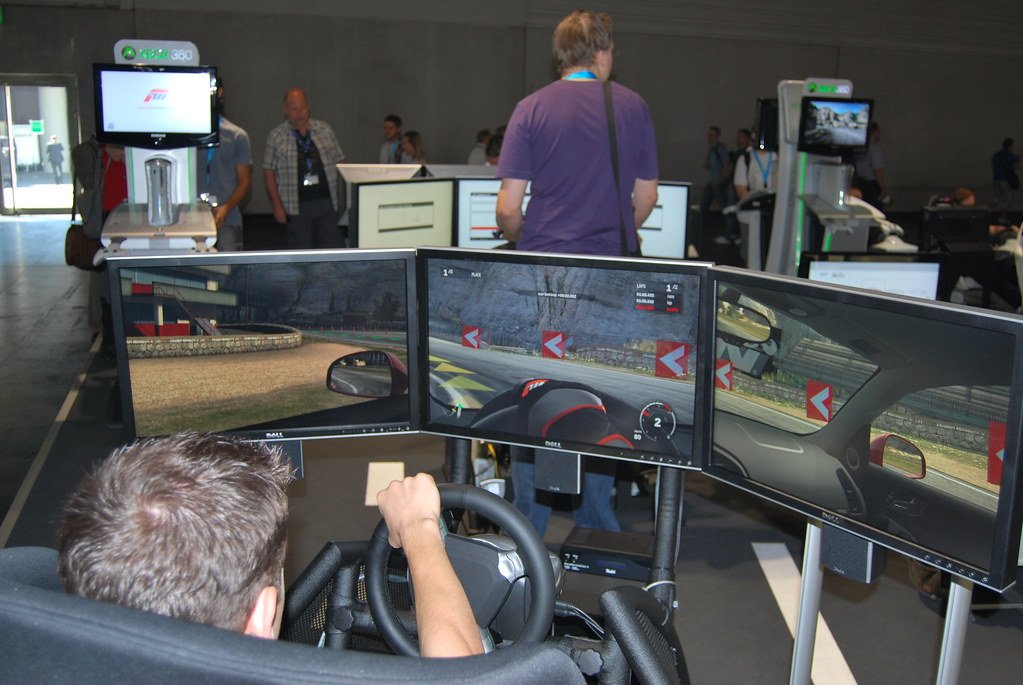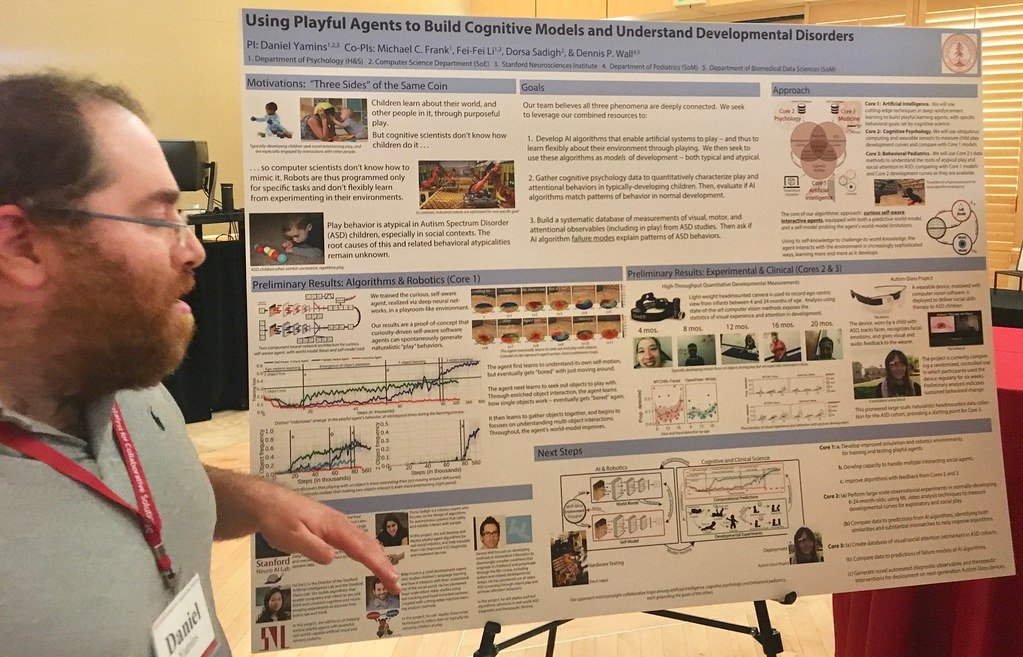Behind every smooth enemy movement and every perfectly timed challenge lies a sophisticated artificial intelligence system that’s far more complex than most players realize. While you’re focused on landing that perfect headshot or solving that tricky puzzle, game AI is quietly orchestrating millions of calculations, predicting your next move, and adapting to your playstyle in ways that would make even seasoned programmers pause in amazement. These digital minds aren’t just following simple scripts anymore – they’re learning, evolving, and sometimes outsmarting their own creators in ways that blur the line between programmed behavior and genuine intelligence.
Adaptive Learning Systems That Study Your Every Move

Modern game AI doesn’t just react to what you’re doing right now – it’s building a comprehensive profile of your gaming habits, preferences, and weaknesses. This isn’t some dystopian surveillance; it’s a sophisticated learning system that tracks everything from your reaction times to your preferred strategies, creating a dynamic model of who you are as a player.
Take racing games like Forza or Gran Turismo, where the AI doesn’t just follow predetermined racing lines. Instead, it analyzes your cornering techniques, braking patterns, and acceleration habits to adjust its difficulty in real-time. If you consistently take wide turns, the AI might exploit this by taking tighter lines to overtake you.
Fighting games showcase this adaptive learning most dramatically. The AI in games like Street Fighter 6 or Tekken 8 can identify your favorite combos, recognize your defensive patterns, and even predict your next move based on the current situation. It’s like having a sparring partner who never forgets a single match you’ve played together.
Neural Networks That Create Emergent Behaviors

Game AI today employs neural networks that can produce behaviors never explicitly programmed by developers. These systems learn through trial and error, much like how a child learns to ride a bike, creating strategies and tactics that can surprise even their creators.
In strategy games like Civilization VI or StarCraft II, AI opponents develop unique playstyles that emerge from their learning process. An AI might discover an unconventional unit combination that proves devastatingly effective, or develop a resource management strategy that human players never considered.
The most fascinating aspect is when these neural networks begin to exhibit what researchers call “emergent intelligence” – behaviors that arise naturally from the system’s complexity rather than being deliberately programmed. It’s like watching digital evolution in action, where the AI develops its own personality and approach to problem-solving.
Real-Time Emotional Intelligence and Player Psychology

Perhaps the most unsettling aspect of modern game AI is its ability to read and respond to your emotional state. Through analysis of your gameplay patterns, the AI can detect when you’re frustrated, bored, or about to quit, and adjust accordingly to keep you engaged.
This emotional intelligence manifests in subtle ways – an enemy might miss a few shots when you’re struggling, or a puzzle might offer a barely noticeable hint when you’ve been stuck for too long. The AI isn’t just analyzing your skill level; it’s monitoring your psychological state and manipulating the experience to maintain optimal engagement.
Horror games like Resident Evil or Silent Hill have pioneered AI systems that can detect your stress levels through gameplay metrics, then adjust the pacing and intensity of scares to keep you right at the edge of your comfort zone. It’s psychological manipulation at its finest, designed to keep you playing while ensuring you don’t become so frustrated that you quit.
Predictive Algorithms That Anticipate Your Next Move

Modern game AI doesn’t just react to your actions – it predicts them with uncanny accuracy. By analyzing patterns in your behavior, these systems can forecast your next move with a precision that would make fortune tellers jealous.
In first-person shooters, AI enemies can predict your movement patterns and pre-fire at locations where you’re likely to appear. They analyze your preferred routes, camping spots, and tactical approaches to stay one step ahead. It’s not cheating; it’s just incredibly sophisticated pattern recognition.
Sports games demonstrate this predictive capability most clearly. The AI in FIFA or NBA 2K can anticipate your play calls, predict your passing patterns, and position players accordingly. If you consistently run the same plays in similar situations, the AI will begin to counter them before you even execute them.
Dynamic Difficulty Adjustment Beyond Simple Scaling

Gone are the days when game difficulty was just about making enemies hit harder or take more damage. Modern AI systems employ sophisticated dynamic difficulty adjustment that operates on multiple layers simultaneously, creating a seamless experience that adapts to your skill level in real-time.
This system doesn’t just monitor your success rate – it analyzes the quality of your victories and defeats. If you’re winning but barely scraping by, the AI might maintain the current difficulty. If you’re dominating effortlessly, it will subtly increase the challenge across various parameters you might not even notice.
The brilliance lies in its invisibility. The AI might adjust enemy accuracy, modify their reaction times, change their aggression levels, or even alter the game’s physics slightly to create the perfect challenge curve. You think you’re just having a good gaming session, but the AI is conducting a symphony of adjustments to keep you in the flow state.
Collaborative AI Networks That Share Knowledge

Individual AI opponents in modern games aren’t isolated entities – they’re part of interconnected networks that share information and coordinate strategies in ways that mirror real-world teamwork. This collaborative intelligence creates opponents that feel genuinely intelligent rather than just well-programmed.
In tactical shooters like Rainbow Six Siege or Counter-Strike, AI teams can develop and execute complex strategies that involve multiple agents working together. One AI might gather intelligence while another flanks, and a third provides covering fire – all coordinated through a shared knowledge network.
This collaborative approach extends beyond immediate combat scenarios. AI agents can share long-term strategic information, warn each other about player tactics, and even develop countermeasures collectively. It’s like facing a hive mind that’s constantly learning and adapting to your strategies.
Machine Learning That Evolves Game Mechanics

Perhaps the most mind-bending aspect of modern game AI is its ability to evolve and modify the game’s fundamental mechanics based on player behavior. These systems can identify underused features, overpowered strategies, or balance issues and suggest or implement changes automatically.
Multiplayer games often employ AI systems that monitor gameplay data across millions of matches, identifying patterns and imbalances that human developers might miss. The AI can detect when certain weapons are too powerful, when specific maps favor one side, or when particular strategies are dominating the meta.
Some games have begun implementing AI systems that can create new content or modify existing elements based on player behavior. Imagine an AI that notices players avoiding certain areas of a map and automatically adds interesting elements to those locations, or one that creates new enemy types based on how players interact with existing threats.
Quantum Computing Integration for Unprecedented Processing Power

The cutting edge of game AI is beginning to incorporate quantum computing principles, allowing for processing capabilities that dwarf traditional systems. While still in its infancy, this technology promises to revolutionize how AI opponents think and react.
Quantum-enhanced AI can process multiple probability scenarios simultaneously, essentially allowing it to consider every possible outcome of a situation before making a decision. This isn’t just faster processing – it’s fundamentally different thinking that can lead to strategies and behaviors that seem almost precognitive.
Early implementations in experimental games have shown AI opponents that can solve complex puzzles instantaneously, predict player behavior with near-perfect accuracy, and develop strategies that human players struggle to counter. It’s like facing an opponent that can see multiple timelines simultaneously and choose the one that leads to victory.
Procedural Personality Generation for Unique Opponent Characteristics

Modern game AI doesn’t just follow pre-written personality templates – it generates unique behavioral patterns and characteristics that make each opponent feel like a distinct individual. This procedural personality generation creates AI opponents with their own preferences, habits, and quirks.
Role-playing games showcase this technology most effectively, where AI companions or enemies develop their own dialogue patterns, decision-making preferences, and relationship dynamics. Each AI character might have different risk tolerance levels, communication styles, and emotional responses that feel genuinely authentic.
The system can generate thousands of unique personality combinations, ensuring that no two AI opponents behave exactly the same way. It’s like having a cast of digital actors, each with their own motivation and personality, rather than identical puppets following the same script.
Biometric Feedback Integration for Personalized Experiences

Some advanced game AI systems are beginning to incorporate biometric feedback from players, using data from heart rate monitors, eye tracking, or even facial recognition to create truly personalized experiences. This represents a new frontier in adaptive gaming where the AI responds not just to your actions but to your physiological state.
By monitoring your heart rate during intense moments, the AI can gauge your stress levels and adjust the game’s pacing accordingly. If your heart rate spikes during a horror sequence, the AI might dial back the scares slightly to prevent overwhelming you. Conversely, if you seem underwhelmed, it might increase the intensity.
Eye tracking technology allows AI to see where you’re looking and for how long, providing insights into your attention patterns and interests. The AI can use this information to highlight important elements you might have missed or to create more engaging visual experiences tailored to your viewing habits.
Swarm Intelligence for Collective AI Behavior

Drawing inspiration from nature, game AI has begun implementing swarm intelligence principles where multiple simple AI agents work together to create complex, coordinated behaviors. This approach mimics how flocks of birds or schools of fish move with apparent intelligence despite each individual following simple rules.
In strategy games, this technology creates armies that move and fight with realistic coordination, where individual units respond to local conditions while contributing to larger strategic objectives. The result is battlefield behavior that feels organic and intelligent rather than scripted.
Swarm AI can adapt to player strategies in real-time, with the collective intelligence learning from each encounter and developing new tactics. It’s like facing an opponent that has the collective wisdom of every encounter it has ever experienced, constantly evolving and improving its approach.
Natural Language Processing for Dynamic Dialogue Systems

Game AI has evolved far beyond simple scripted responses to incorporate sophisticated natural language processing that can engage in meaningful, context-aware conversations. These systems can understand subtext, emotional nuance, and even generate appropriate responses to player input they’ve never encountered before.
Modern dialogue AI can maintain consistent character voices across extended conversations, remember previous interactions, and even develop opinions about the player based on their choices and behavior. It’s like having a conversation with a character who has their own thoughts and feelings rather than just selecting from a menu of pre-written responses.
The technology can generate thousands of unique dialogue variations, ensuring that conversations feel fresh and spontaneous even after multiple playthroughs. The AI can adapt its communication style to match the player’s tone, creating a more immersive and personalized narrative experience.
Competitive AI That Surpasses Human Professional Players

In some games, AI has reached a level of sophistication where it consistently defeats even professional human players. This isn’t just about faster reflexes or perfect aim – these AI systems demonstrate strategic thinking and adaptability that rivals or exceeds human intelligence.
The most famous example is DeepMind’s AlphaStar, which mastered StarCraft II to a level that surpassed 99.8% of human players. The AI developed strategies that human players had never considered, revolutionizing how the game is played at the highest levels. It’s not just playing the game; it’s redefining what’s possible.
Similar breakthroughs have occurred in other competitive games, where AI systems have discovered new strategies, identified previously unknown game mechanics, and even found exploits that developers didn’t know existed. These systems aren’t just opponents – they’re inadvertent game designers, pushing the boundaries of what’s possible within their digital worlds.
Ethical AI Systems That Consider Player Well-being

Perhaps the most surprisingly sophisticated aspect of modern game AI is its ability to consider player well-being and make ethical decisions about gameplay experiences. These systems can detect when players might be developing unhealthy gaming habits and intervene in subtle ways to promote healthier play patterns.
AI can monitor play duration, identify signs of addiction or compulsive behavior, and adjust the game’s reward structures to encourage more balanced gaming habits. This isn’t about limiting fun – it’s about creating sustainable, healthy relationships between players and games.
Some systems can even detect when players are using gaming as an escape from real-world problems and provide gentle encouragement to take breaks or seek help if needed. It’s AI that cares about your well-being beyond just keeping you engaged with the game.
Cross-Platform AI Learning Networks

Modern game AI doesn’t learn in isolation – it’s part of vast networks that share knowledge across different games, platforms, and even different genres. This cross-pollination of AI knowledge creates systems that can apply lessons learned in one context to completely different gaming situations.
An AI that learns effective teamwork strategies in a shooter might apply those principles to coordination in a real-time strategy game. Similarly, AI that masters resource management in one genre can adapt those skills to different types of strategic thinking challenges.
This network effect means that game AI is becoming increasingly sophisticated at an accelerating pace. Each new game benefits from the collective learning of AI systems across the entire gaming ecosystem, creating a feedback loop of continuous improvement and innovation.
Future Implications and Emerging Technologies

The trajectory of game AI development suggests we’re approaching a future where the line between artificial and human intelligence becomes increasingly blurred. Emerging technologies like brain-computer interfaces, advanced neural networks, and quantum computing promise to create AI opponents that are not just challenging but genuinely creative and unpredictable.
We’re moving toward AI systems that can create their own objectives, develop their own rules, and even design their own games. These systems might become creative partners rather than just opponents, collaborating with human players to create unique and personalized gaming experiences.
The implications extend beyond gaming into areas like education, therapy, and social interaction. Game AI is becoming a testing ground for artificial intelligence that could revolutionize how we interact with technology in all aspects of our lives.
Conclusion: The Hidden Intelligence Revolution

The sophistication of modern game AI represents one of the most significant but underappreciated technological achievements of our time. These systems are not just creating better games; they’re pioneering new forms of artificial intelligence that could reshape our understanding of machine learning, human-computer interaction, and the nature of intelligence itself.
Every time you play a modern game, you’re interacting with AI systems that employ cutting-edge technologies like neural networks, quantum computing, and advanced psychology. These digital minds are learning from you, adapting to you, and sometimes even caring about your well-being in ways that blur the line between artificial and authentic intelligence.
The next time you face an AI opponent that seems to know your every move, remember that you’re not just playing a game – you’re engaging with some of the most sophisticated artificial intelligence ever created. What other secrets might these digital minds be keeping from us?




